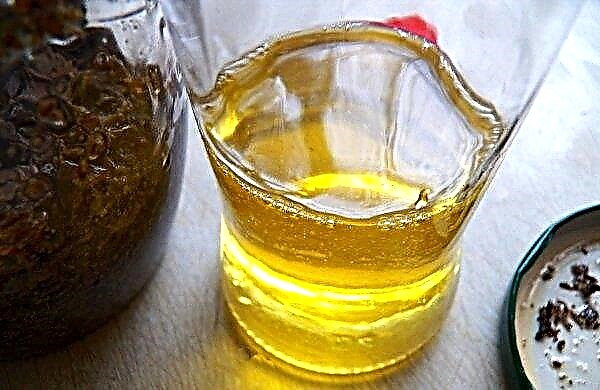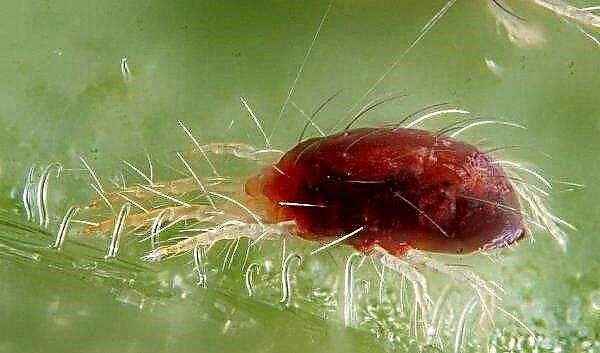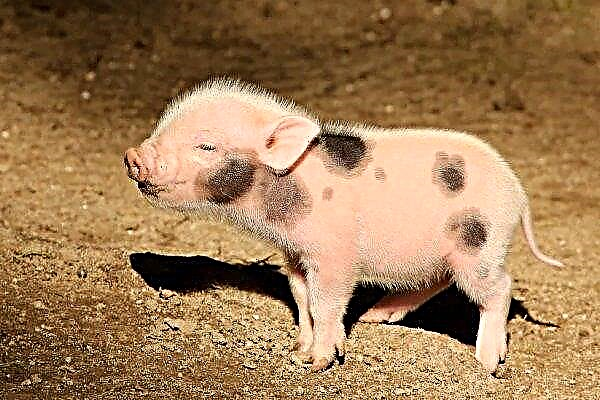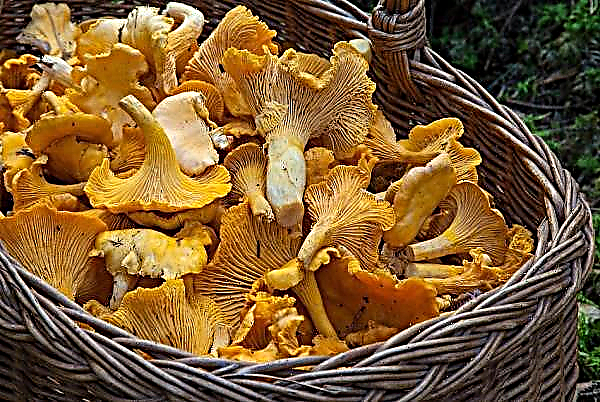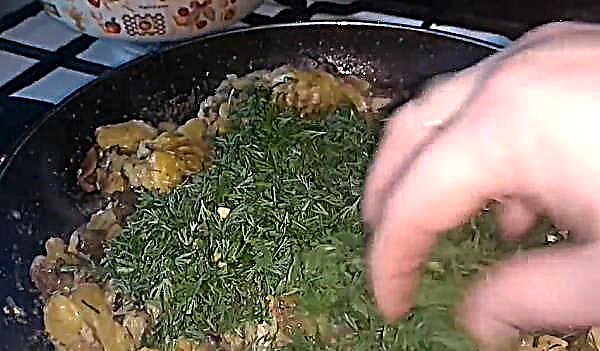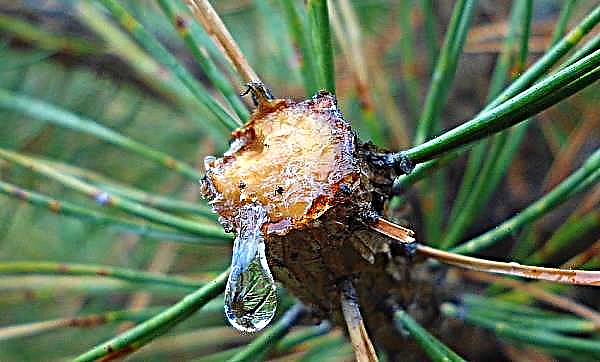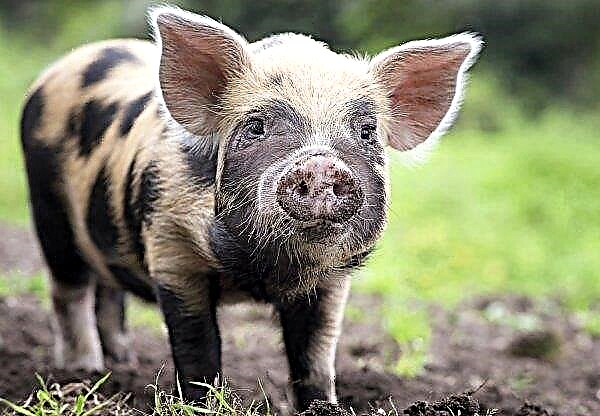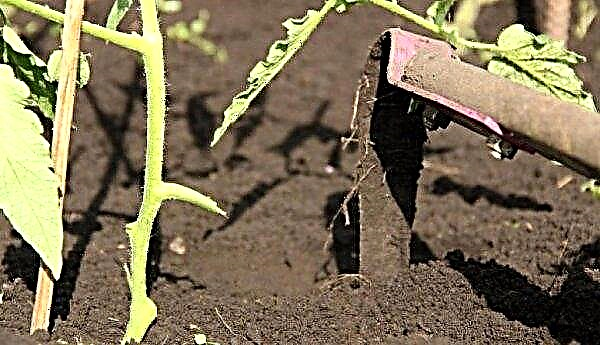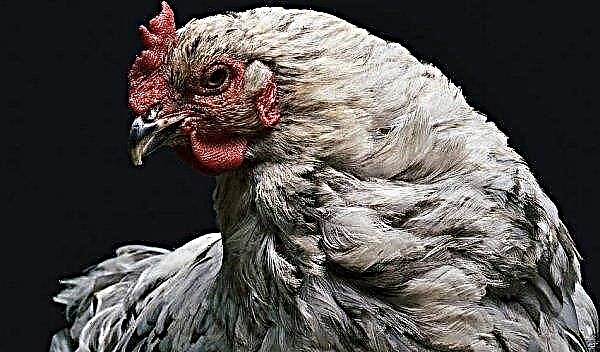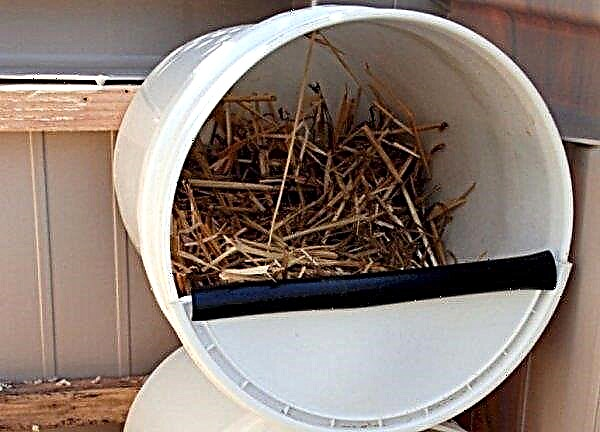One of the most threatening insects for humans is the hornet. His bite in the absence of qualified medical care can lead to serious health consequences or even prove fatal. Let's look at what to do with a hornet attack and how to provide competent help to a person.
Types of hornets and their lifestyle
The hornet is the largest representative of the wasp family, whose body length varies from 2 to 2.5 cm, while the length of the uterus is about 3.5 cm. Most often Hymenoptera can be found in gardens, in the country, in flower forest glades, outside the city. They can build their nests anywhere: under the roof of a house, on trees, in shrubs and other areas that are well protected from the negative effects of climatic conditions.
In appearance, this representative of Hymenoptera is easy to identify from the wasp. Compared with the wasp, it has a more rounded front part of the abdomen, a large crown part of the head. It also differs in the color of the breast: the hornet is brown with a reddish tint, while its younger relatives have black.
There are several dozen types of insects that live in different parts of the planet: Japanese hornet, common, eastern, deplorable, Asian, Dybovsky. The greatest threat to humans is tropical species, the bite of which can be fatal. Insects living in the spaces of our state are more harmless, and after their bite, death can occur only due to severe allergies and the lack of competent first aid.
Did you know? In the countries of the East, more than 70 individuals die from a hornet bite a year. This death rate is significantly higher than the mortality from wildlife attacks.
Why is a hornet bite dangerous for a person?
Getting to know the hornet can sometimes be deadly for people. To attack the enemy, he immediately launches two main weapons: on the one hand - this is a sting through which poison is injected, on the other hand - the insect bites with powerful enough jaws.
What does a hornet bite look like?
Hornet is the most dangerous and poisonous hymenoptera. His bite is accompanied by pain, itching, swelling. The stinging representative of the wasps releases poison, causing severe pain. In this case, the intensity of the pain will depend on the amount of toxic substance released. It should be noted that the hornet has twice as much toxic mixture as the bee.
The bite features are supplemented by the composition of the poison, the main active ingredients of which are:
- histamine, provoking a momentary allergic reaction;
- acetylcholine, which contributes to the emergence of severe pain;
- biogenic amines that provoke arrhythmia, rapid breathing;
- phospholipases that cause cellular destruction, resulting in hemorrhage and suppuration;
- protein compounds that provoke the breakdown of cellular compounds that belong to the immune system.
Important! Exercise bites hornet, unlike a bee, can repeatedly.
Hymenoptera bite can be recognized by the following symptoms:
- swelling and swelling in the place where the parasite bit;
- sharp pain at the point of entry of the sting and the appearance of a dense white papule;
- the rapid spread of redness and swelling in other areas.
The reaction of the human body to bites can be different. However, it can cause the most serious consequences in children and adolescents under 15 years of age, in whom the process of poisoning with toxins occurs at an instant pace, which is why experts advise to immediately contact a doctor.
The main symptoms of a bite
The hornet's bite is accompanied by redness, swelling and swelling of the tissues at the site of the sting.
In addition, it can cause:
- increase in body temperature
- heavy sweating;
- heart palpitations and jumps in blood pressure;
- enlarged lymph nodes;
- nausea, dizziness, sometimes vomiting;
- confusion of speech.

Often, in a person affected by an insect, blueness of the lips, mucous membranes of the mouth, auricles appears, lower and upper extremities begin to cool.
If a person has an increased tendency to allergic reactions, then he may appear:
- allergic rashes in the form of urticaria, itching or rash on the skin;
- swelling of the eyelids and soft tissues;
- bronchospasm, laryngeal edema;
- a feeling of strangulation in the chest;
- asphyxia, lack of oxygen;
- anaphylactic shock.
Important! As soon as the insect stings in the area of the blood vessel, in the neck or head, a person may expect loss of consciousness, the development of seizures, acute hemorrhage in the eye.
What to do if a hornet has bitten
Proper and competent actions during the first 15–20 minutes after a hornet bite will help to avoid many threatening consequences for a person and even, possibly, save their life if they suffer from allergic reactions. The main thing in this situation is to do all the manipulations promptly and decisively.

First aid
If after the hornet attack there is no way to take the victim to the hospital, then he needs to be given first aid, which consists in the following actions:
- Inspection of the affected area. First of all, experts advise a visual inspection of the bite site for the presence of a sting or its remnants. If you managed to see a foreign object, then it must be very carefully pulled out with a disinfected tweezers.
- Wound treatment. After removing the sting, it is recommended that any means for disinfection (alcohol, a solution of hydrogen peroxide, a weak solution of potassium permanganate) process the place. In the absence of antibacterial drugs, washing the wound with plenty of clean water is allowed.
- Cryotherapy. In order to prevent the spread of a toxic substance through tissue cells, it is necessary to apply a compress from the cold, a small piece of ice, any frozen product, etc. to the skin.
- Itching. Experts advise to alleviate the condition of a person and relieve him of severe itching at the site of a bite using saline, a crushed tablet of acetylsalicylic acid, fresh cucumber juice, fresh parsley or dandelion greens.
- Taking antiallergic drugs. To remove or prevent the manifestation of allergies, the victim must take any antihistamine drug: Suprastin, Pipolfen, etc.
Pharmacy remedies against bites
After a person has suffered from the negative action of an insect, it is recommended in any case to take an antiallergic agent:
- "Suprastin";
- "Tsetrin";
- Erius
- Claritin.

In addition, special ointments and balms will help relieve itching, swelling and swelling at the site of the bite, among which:
- "Fenistil gel";
- Moskitol;
- Soventol;
- "Gardex Family";
- "Psilo-balm."
Often insect bites are accompanied by fever. However, experts do not recommend knocking down the temperature if it is at levels below 38 degrees. A slight increase in temperature will allow you to quickly cope with toxins.
Important! Antihistamines should always be in your home medicine cabinet, because in special cases they can save a person’s life.
The use of folk remedies
You can reduce pain after an insect attack, reduce swelling of the tissues and remove severe itching using folk remedies. In nature, the plants will help overcome the main symptoms of bites - plantain leaf, dandelion juice, chopped parsley, which are applied to the affected area and can withstand several minutes.
In the conditions of a house or apartment, it is recommended to use the following means:
- aloe juice or pulp;
- crushed aspirin tablet;
- weakly concentrated potassium permanganate solution;
- compress of: 0.5 tsp citric acid, ½ cup vinegar and 250 ml of water;
- saline-soda solution.

Similar home remedies are applied in this way:
- the lesion is treated with clean water or an antiseptic;
- Aloe pulp, plantain leaf, chopped greens are placed on the site, covered with a clean cloth;
- make new compresses every 15-20 minutes until the condition is relieved.
In the case when an insect stings in the area of the tongue or mucous membranes, traditional healers offer to immediately eat 2-3 cloves of garlic or drink 1 tbsp. wine vinegar, and then seek help from a doctor.
Did you know? In biblical times, Hymenoptera was used as a weapon. Clay containers were filled with insects and thrown with catapults into the corrals of enemies. Hornets flew out of the pots and attacked everything that came in their way.
When to see a doctor
Often, a hornet bite poses a special danger to a person and can provoke quite serious negative consequences. In such situations, solving the problem with folk remedies is not enough.
It is recommended to immediately seek qualified medical help with:
- severe weakness, loss of strength, loss of consciousness;
- dizziness
- a sharp increase in body temperature above 38 degrees;
- profuse vomiting;
- too strong edema and their growth;
- the presence of seizures, nerve convulsions.
In addition, it is absolutely necessary to call an ambulance if the victim is under 16 years old. Another reason for professional help is considered hornet bites in the neck, mouth, mucous membranes and face. As a result of inaction in a person, laryngeal edema, asphyxia and anaphylactic shock can occur.

In case of self-transportation of the victim to a medical facility, you must adhere to the main rules:
- a person’s head should be below body level;
- the victim must be in a lying position.
What can not be done with a hornet bite
In addition to knowing the basic rules for providing first aid for hornet attacks, you should also know what you can’t do:
- give the victim alcoholic drinks, as they contribute to the rapid spread of toxic substances throughout the body and increase swelling;
- take “Diprazin” as an antiallergic drug, since it is capable of causing a similar reaction of the body;
- cauterize or heavily rub the lesion;
- warm up the wound;
- treat the area with brilliant green or iodine.
And the most important rule is not to ignore the fact of a hornet bite and its first symptoms. After all, it is precisely irresponsible individuals who are negligent in their health that doctors have to literally save from death.
Avoiding a Hornet Bite
Hornets, like other representatives of the aspen family, never attack a person for no apparent reason. However, any sudden movements, waving hands are perceived as an attack. Being nearby with an insect, it is necessary to behave as calmly as possible, freeze in place for several minutes, do not panic, do not scream or run away, try to slowly move away from the attacker.
To protect yourself from the attacks of a poisonous parasite, you must adhere to certain measures:
- When going on a picnic, do not use various perfumes or highly fragrant cosmetics, as it attracts insects. It is also not recommended to wear bright, colorful clothes, which serve as an excellent bait for hymenoptera;
- you should not kill a hornet in the immediate vicinity of its nest, as this can cause anger of the whole family;
- It is strictly forbidden to disturb the nest of insects, knock on it, swing it.
If you find nests with hornets near the house, you need to seek professional help from special services that can safely and quickly fix the problem.
Complications and consequences
Further complications and the negative consequences of a hornet bite will be determined by several factors:
- age category of the victim;
- the tendency of the body to allergic manifestations;
- how many bites were applied and in which parts of the body. The more of them, the more serious the reaction will be. The most unsafe areas of bites are the face, neck, mucous membranes, eyes;
- general state of human health.
How to help a pet with a bite
Not only people, but also pets can suffer from hornet bites, and the latter also need immediate help, which is required for several reasons:
- the animal may develop allergic reactions that are fatal;
- pets experience severe pain and itching;
- they can comb the affected area, which will help to get infections into the wound.
Common signs of stinging an animal with an insect are:
- fright and whining;
- weakness and lethargy;
- increased salivation;
- trouble breathing
- redness and swelling of the bitten skin.
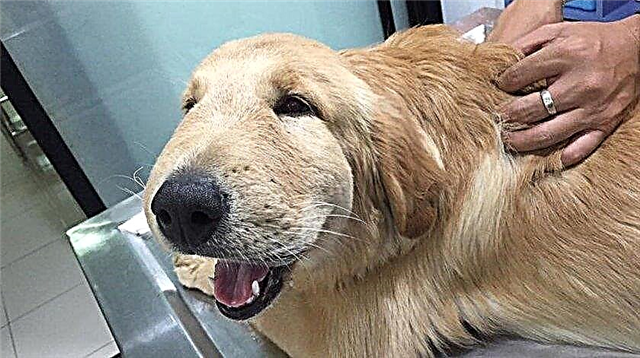
In the absence of a pronounced allergy to poison, to help the animal, it is enough to carry out a number of the following actions:
- inspect the affected area; if there is a sting, carefully remove it with tweezers;
- squeeze out some blood with poison until it has spread;
- treat the place of damage with an antiseptic;
- apply a cold compress to the affected area, withstand about 15-20 minutes;
- during the procedures regularly water the animal;
- to prevent allergies from giving the pet any antihistamine;
- observe the animal for several days.
If the consequences of the bite are more serious and the pet has an allergy, then urgent and clear measures are needed to save him:
- inject or drip an antiallergic drug into the oral cavity;
- immediately bring the animal to the veterinarian.
Important! When biting an animal with a hornet, it is recommended to restrict the movement of the pet in order to prevent the spread of toxic substances throughout the body.
A hornet bite is considered one of the most dangerous and unpredictable, in rare cases it can lead to death. To protect themselves from danger, experts recommend avoiding the accumulation of hymenoptera, and at the first sign of an attack take all necessary measures to eliminate the negative consequences.





